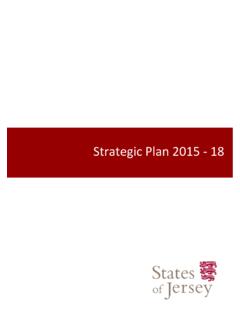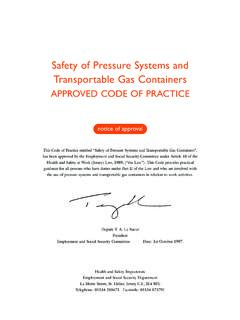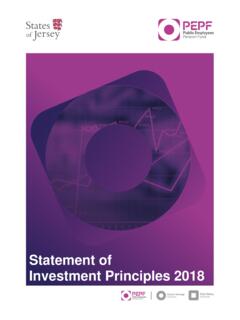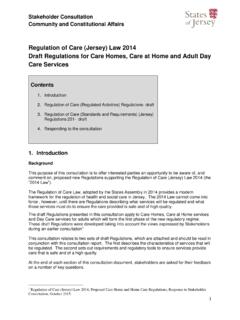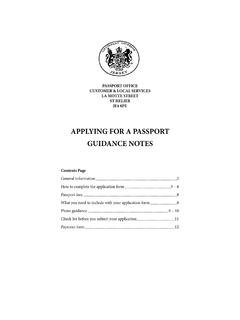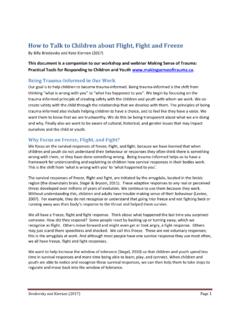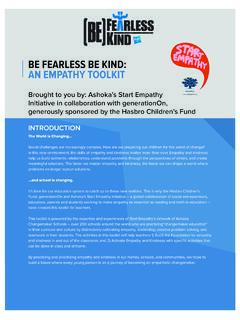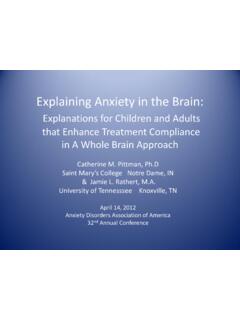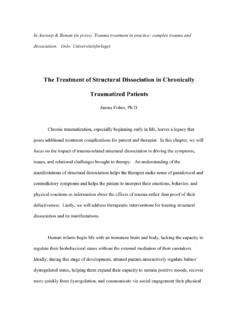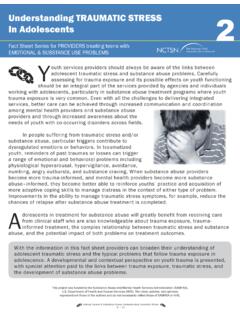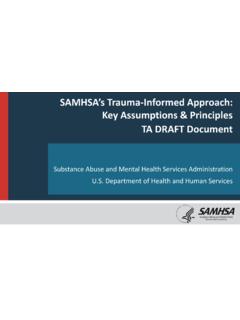Transcription of The Window of Tolerance - Government of Jersey
1 The Window of Tolerance : Supporting the wellbeing of children and young people (Information and ideas for families and schools reconnecting after lockdown) In this document: What is the Window of Tolerance ? The river of wellbeing. Expanding the river. Supporting a child or young person to stay or return into their Window of Tolerance . Ideas for moving from chaos / hyper-arousal. Ideas for moving from rigidity / hypo-arousal. Tips on how to be present / in the moment. The healthy mind platter. How is your time spent? References and resources. The Window of Tolerance is a model founded in Neuroscience (the scientific study of the nervous system), which helps develop good practice for improving and maintaining mental health and wellbeing. It offers a way of thinking about how we function optimally, in our various roles, and how to manage when heightened emotions begin to have a negative impact.
2 Like everyone, children s emotions fluctuate, particularly at times of stress and crisis and in the height of emotion, they find it difficult to express what s happening verbally. Physiological and behavioural changes provide the information we need to understand and support them. Recognising the signs that a child or young person is struggling with their emotions, helps us to support them. Using the Window of Tolerance is one way of doing this. Jersey Psychology and Wellbeing Service May 2020 The Window of Tolerance : supporting the wellbeing of children and young people What is the Window of Tolerance ? Developed by Dan Siegel, a Clinical Professor of Psychiatry, the Window of Tolerance describes the best state of arousal or stimulation in which we are able to function and thrive in everyday life.
3 When we exist within this Window , we are able to learn effectively, play, and relate well to ourselves and others. However, if we move outside of our Window we can become hyper-aroused or hypo-aroused. Hyper-arousal results from the fight or flight response and is characterised by excessive activation/energy. It can present as difficulties concentrating, irritability, anger and angry outbursts, panic, constant anxiety, easily scared or startled, self-destructive behaviour, etc. Hypo-arousal results from the freeze / flop drop response where there is a sense of shutting down or dissassociating. This can present as exhaustion, depression, flat affect, numbness and disconnection. We all have different windows , due to factors such as: significant childhood experiences, our Neurobiology, social support, environment and coping skills.
4 The size of our windows can change from day to day but the wider we can make the Window , the less likely we are to experience anger, frustration or feel flat, low and lacking energy. The River of Wellbeing To think about these issues in another way, imagine canoeing down a river; the River of Wellbeing. On one side of the river is the bank of hyperarousal and chaos, and on the other side of the river is the bank of hypoarousal and rigidity. Some children and young people can bounce from one bank to the other, experiencing difficulty finding the middle of the river. And this affects their ability to function effectively. The wider the river, the more safe space is created the easier it is to deal with obstacles and challenges that arise. One of the challenges is to help children develop self-awareness of their position in the river; sometimes the river will feel very narrow or be full of obstacles that tend to push them into a state of feeling overwhelmed or unable to regulate their emotions well ( the banks of chaos or rigidity).
5 One technique to help children expand the river, and therefore give themselves greater opportunity to be resilient and stay calm and focussed, is by developing their self-awareness and with this, greater levels of adaptability, flexibility and independence. These are called Process Interventions. This would be like the canoeist having an idea of what obstacles to expect and the skills to be able to negotiate them. The more they practise their ability to anticipate and navigate obstacles, the more confident and empowered they will feel, and over time the river seems to get wider. Another technique is to provide external supports and strategies, such as adapting the environment ( sensory accommodations); building in predictability ( visual timetables, structure, routines); and / or providing keyworker support ( school-based ELSA time).
6 These are called Compensation Interventions. Rather than the focus being on the canoeist developing their inner resources and skills, embankments would be built up; the canoe stabilised or perhaps a guide would work with them. How to expand the river using different techniques The Coronavirus Pandemic has affected everyone. Feelings of anxiety and feeling unsettled are normal, healthy reactions to an abnormal and unique situation. Research suggests there are 5 themes to consider when outlining the possible impact of Covid-19 lockdown on an individual: structure, routine, friendships, opportunities and freedom (Carpenter and Carpenter, 2020).These are useful themes to consider when investigating how to support children and young people at this time and what strategies might prove effective to broaden their river, enhance their canoeing skills and improve your effectiveness when supporting them.
7 Supporting a child or young person to stay or return into their Window of Tolerance 1. Before you consider supporting another person, be aware of where you are in your Window of Tolerance . If you are outside of your Window , you are not going to be able to effectively support another to be in theirs. If outside of your Window , use strategies for yourself firstly. a dysregulated adult cannot regulate a dysregulated child Dr Lori Desautels 2. Explore the right foundations are in place. Sleep deprivation, poor nutrition, lack of exercise, physical pain or illness, substance misuse, underlying neurodevelopmental condition/s or underlying stress ( from being bullied) are all likely to narrow the Window of Tolerance . 3. When supporting a child, try to understand their triggers.
8 What tends to move them outside of their Window ? Examples include: being overly excited, sensory overload, peer problems, difficulty with written work or sustaining attention for long periods. ABC charts can be helpful for identifying themes and patterns. Are there any adaptations that can be made? 4. Understand what helps. What works to return one person to their Window of Tolerance , or the centre of the River of Wellbeing, may not work for someone else. As you explore and identify what helps, make a list that can then be shared with the child or young person and their family / school. Some of the strategies below may help to move from a hyper-aroused state as well as hypo-aroused depending on individual need. When a child is emotionally offline , begin with validation; self-soothing or self-regulating behaviours before trying to help them make sense of a situation.
9 Allow for choice and control. A child needs to feel safe, understood and accepted (have emotional resonance). Also, remember what helps one person will be unique and individual. Skills need to be practised regularly and when the child is calm. When skills are familiar they are easier to use at times when they feel outside their Window . Exploration with a child, combined with observations and triangulating information, can help determine the triggers for dys-regulation, the child s emotional response and which of the following strategies might prove helpful and meaningful to enhance resilience. The Power of Breathing The breath can be extremely effective for regulating emotions, especially when used with movement. However, not all children will respond well to using breathing techniques.
10 If you think a focus on breathing may be useful to the child, then consider how you can build in some exercises as a proactive measure at the start of every school morning and afternoon, or at home before they leave for school. 3. 7/11 breathing - Breathing in for a count of 7 and out for a count of 11. The longer outbreath triggers the parasympathetic response, which calms the body. For younger children 3/5 breathing can be used. Also blowing bubbles, making the blowing extended in length; and hot chocolate breath (imagining smelling the hot chocolate through the nose and cooling the drink by gently blowing out). 4. Drinking from a straw - This can aid attention and be soothing. This promotes one of the earliest forms of self-regulation sucking on a dummy or a thumb (or breast-feeding).
